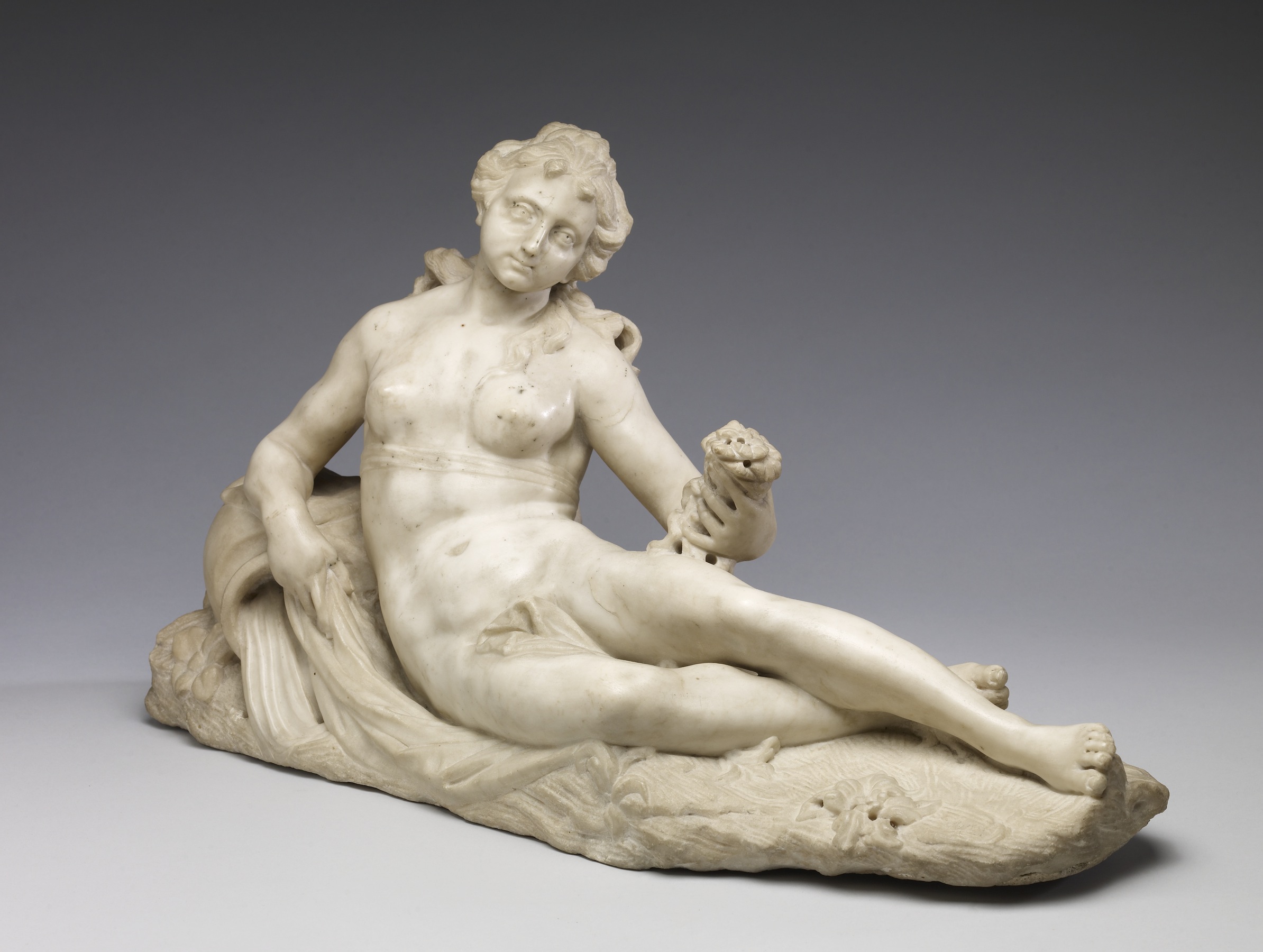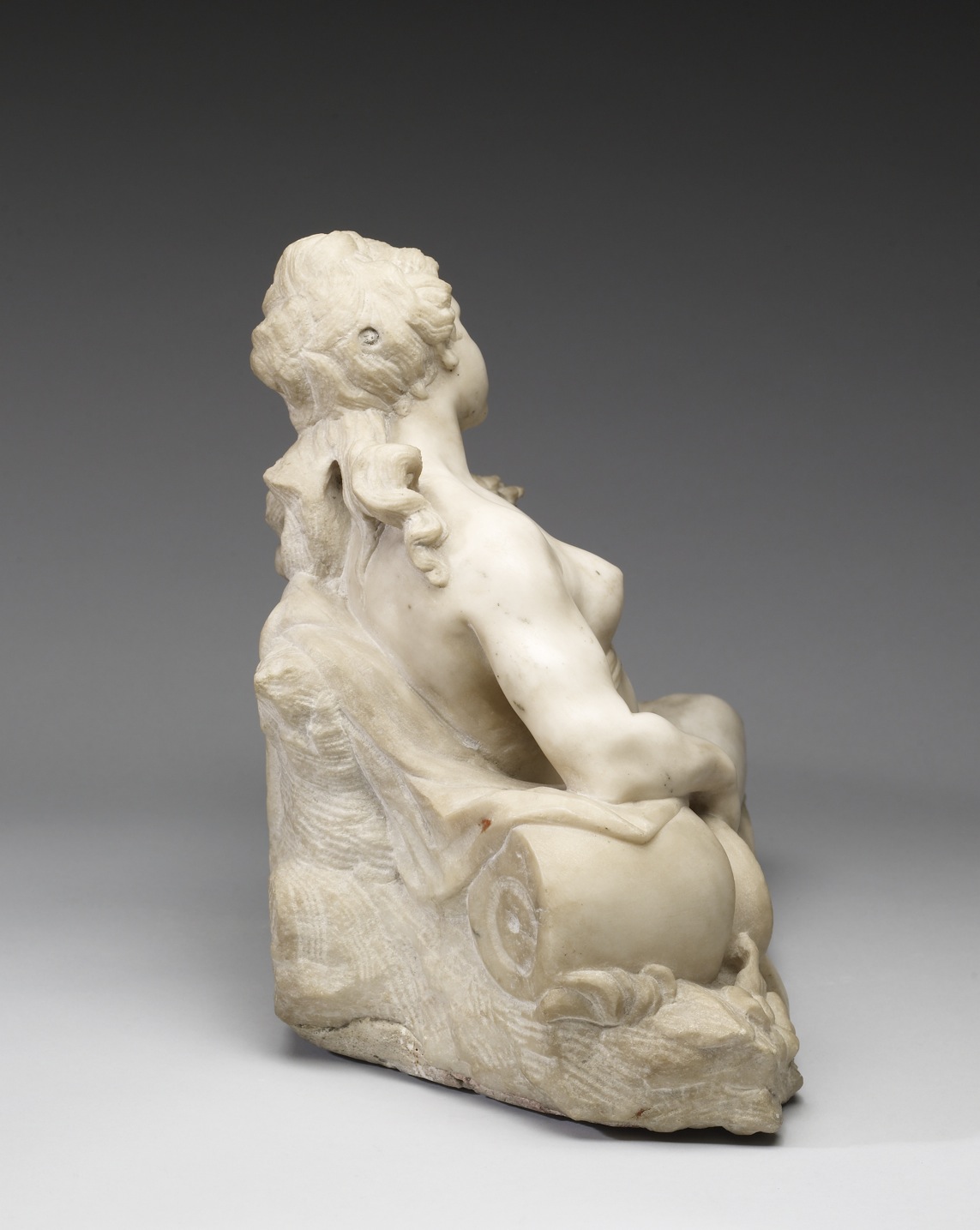Reclining River Nymph, Arethusa
(Baroque Europe )
In Greek and Roman myth, nymphs were female spirits of nature. Resting on an urn from which water flows and holding flowers, this muscular river nymph reclines in a pose made famous by the Roman marble river gods, personifications of Rome's own Tiber River and the Nile, which visitors to Rome admired on the Capitoline Hill. This particular nymph can be identified as Arethusa since she forms a pair with a parallel figure of the male river god Alpheus in a private collection. Their story is told by the Roman poet Ovid in his Metamorphoses (V, 572-641).
The sculpture has now been identified as a relatively early work of the Venetian sculptor Francesco Bertos. His set of bronze allegories of the Four Continents in the Walters (54.657-54.660), characterized by slender, elongated figures that almost float in the air, is representative of his better-known, later style.
Provenance
Provenance (from the French provenir, 'to come from/forth') is the chronology of the ownership, custody, or location of a historical object. Learn more about provenance at the Walters.
Henry Walters, Baltimore [date and mode of acquisition unknown]; Walters Art Museum, 1931, by bequest.
Exhibitions
| 1971-1972 | World of Wonder. The Walters Art Gallery, Baltimore. |
Conservation
| Date | Description | Narrative |
|---|---|---|
| Treatment | cleaned | |
| 10/19/1965 | Treatment | cleaned |
Geographies
Italy, Venice (Place of Origin)
Measurements
H: 12 3/4 × W: 22 1/16 × D: 8 11/16 in. (32.4 × 56 × 22 cm)
Credit Line
Acquired by Henry Walters
Location in Museum
Accession Number
In libraries, galleries, museums, and archives, an accession number is a unique identifier assigned to each object in the collection.
In libraries, galleries, museums, and archives, an accession number is a unique identifier assigned to each object in the collection.
27.426












